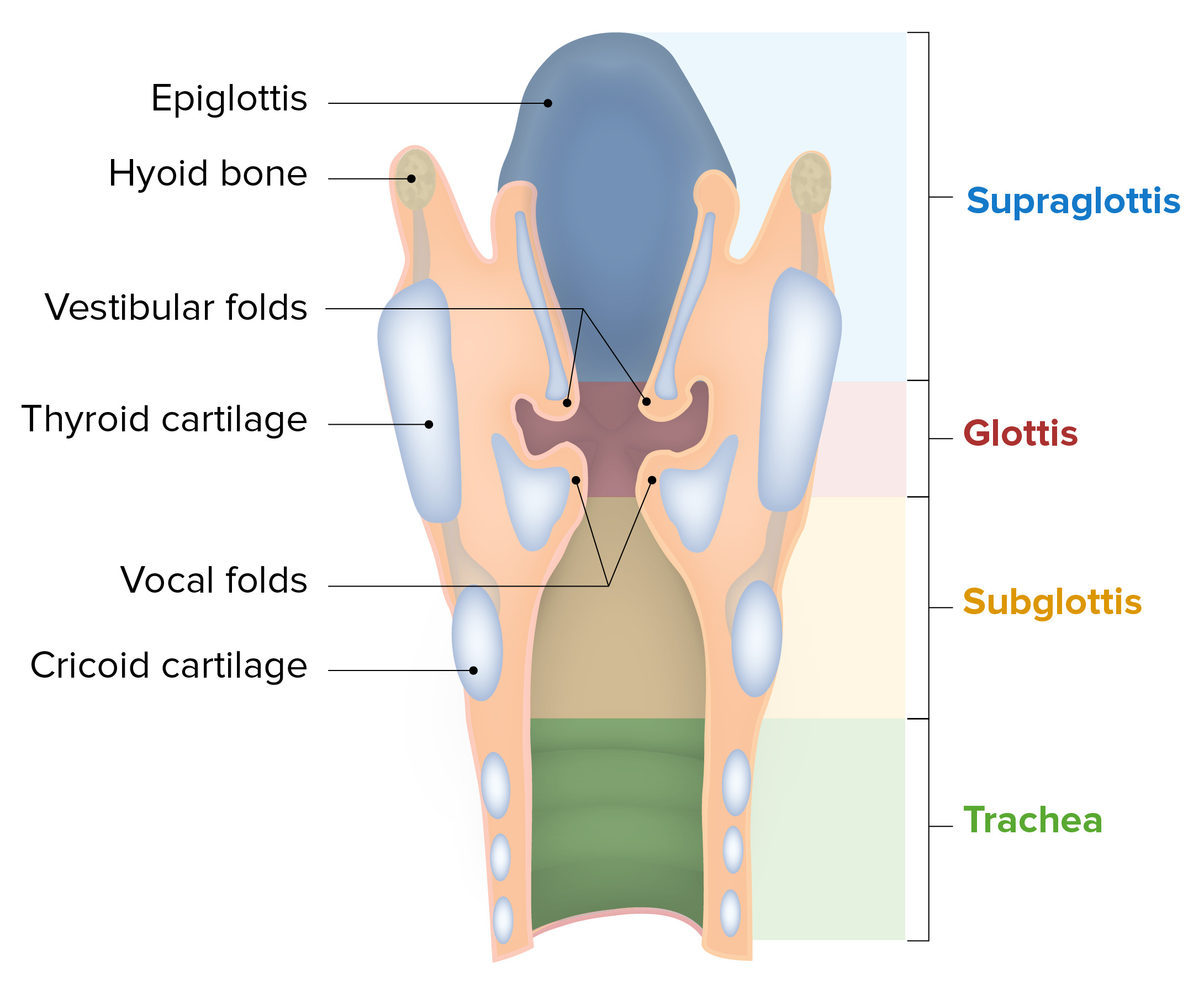Playlist
Show Playlist
Hide Playlist
Larynx and Epiglottis
-
Slides 03 Human Organ Systems Meyer.pdf
-
Reference List Histology.pdf
-
Download Lecture Overview
00:00 cells normally in normal histological sections. But they exist and they are important. 00:02 Well let us move on and look at the larynx. Here is a section on the right-hand side again of that mid-sagittal section taken through the nasal cavity and the oral cavity. And you can see the larynx positioned in this particular section through the body. Remember it is just below the epiglottis and earlier on I explained the importance of the epiglottis in closing over the entry into the airway at the larynx as the larynx is lifted during swallowing. 00:38 And labelled on the image in the middle, the histological section of the larynx are various components of the larynx. This section is through again the center of the larynx of a person looking towards you. So you can see on the right and left-hand side of the airway going down through the vestibule are two ventricles and then above this ventricle is a ventricular fold and below is a vocal fold. These two folds are called the vocal folds, but the ventricular fold is a false vocal cord. The true vocal cord is a vocal fold that is labelled and lies in the most inferior part of that ventricle. The ventricles in the vestibule are very important components because they help to change the sounds of their voices. And I will talk a bit about that in a moment. Now the vocal fold is our true vocal cord. As supposed it is facing you these extend in an anteroposterior orientation and they, in fact, form the boundary of the larynx of the airway going down in towards the lungs through the trachea and that boundary is called the rima glottis. And the glottis opens and closes during respiration. 02:11 This vocal fold has got attachments. It has got attachments from the vocalis muscle through vocalis ligament. But this vocal cord also can be influenced by other components. 02:29 When air passes along between these vocal cords, the vocal cords vibrate and this vibration can be moderated. They can be changed. The vocal cord can become more tense or more relaxed and that changes the type of vibration and, therefore, the pitch of the sound. And the tension on that vocal cord is produced intrinsically by the vocalis muscle contracting. It is also changed by very small cartilages and intrinsic muscles that move those cartilages and change the proportions of the glottis. So changing the proportions or the diameter of the glottis or the opening into the airways and change in the tension on the vocalis, the vocal cord is responsible for the pitch of their voices. And phonation is really then also carried out by the effects of the sound going through the vestibule and the ventral that you see here and also in the upper parts of our respiratory system that gives out individual sound of our vowels and our consonants. There are extrinsic muscles to the larynx. They have no role in sound production. 03:56 They are the muscles that we use to actually lift the larynx that I described before as part of the swallowing process. Well let us look at the trachea. Trachea has got a number of
About the Lecture
The lecture Larynx and Epiglottis by Geoffrey Meyer, PhD is from the course Respiratory Histology.
Included Quiz Questions
Where are the vocal folds located relative to the ventricular folds?
- Inferior
- Superior
- Lateral
- Posterior
- Medial
The passage of air results in which of the following movements in the vocal cords?
- Vibration
- Rotation
- Elongation
- Displacement
- Passage of air does not cause vocal cord movement.
The cricoid and epiglottis are mainly composed of which of the following types of cartilage, respectively?
- Hyaline, elastic
- Hyaline, fibrous
- Elastic, fibrous
- Elastic, hyaline
- Fibrous, hyaline
Customer reviews
4,0 of 5 stars
| 5 Stars |
|
0 |
| 4 Stars |
|
1 |
| 3 Stars |
|
0 |
| 2 Stars |
|
0 |
| 1 Star |
|
0 |
Good lecture but too montonus,looks a person is reading out the textbook




